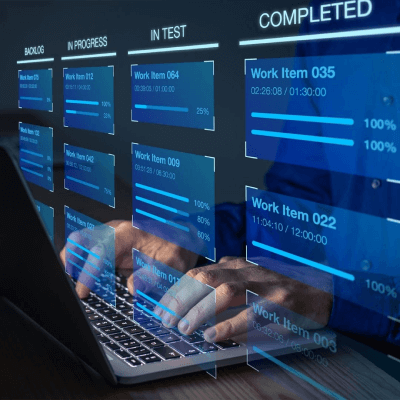As Diners Flock to Delivery Apps, Restaurants Fear for Their Future
As Diners Flock to Delivery Apps, Restaurants Fear for Their Future. While the apps say they are saving them in the pandemic, many restaurateurs say the opposite.
Before the coronavirus lockdowns, Matt Majesky didn’t take much notice of the fees that Grubhub and Uber Eats charged him every time they processed an order for his restaurant, Pierogi Mountain.
But once the lockdowns began, the apps became essentially the only source of business for the barroom restaurant he ran with a partner, Charlie Greene, in Columbus, Ohio. That was when the fees to the delivery companies turned into the restaurant’s single largest cost — more than what it paid for food or labor.

Important Announcement – EasyShiksha has now started Online Internship Program “Ab India Sikhega Ghar Se”

Pierogi Mountain’s primary delivery company, Grubhub, took more than 40 percent from the average order, Mr. Majesky’s Grubhub statements show. That flipped his restaurant from almost breaking even to plunging deeply into the red. In late April, Pierogi Mountain shut down.
“You have no choice but to sign up, but there is no negotiating,” Mr. Majesky, who has applied for unemployment, said of the delivery apps. “It almost turns into a hostage situation.”
Top Courses in Software Engineering
Complaints about the fees that the apps charge to both restaurants and consumers are longstanding, but the issue has become heightened as many restaurants have shut down in-room dining. Even as they begin reopening, delivery is likely to remain a bigger part of their business than before the pandemic.
Several restaurants have also publicly worried that if Uber’s talks to acquire Grubhub succeed, small restaurant owners will have even less power in pushing back against the fees.
The gap between the success of the apps and the pain of the restaurants is striking. Spending at restaurants in recent weeks dropped about 35 percent from a year earlier, while revenue for the delivery services rose about 140 percent, according to data from M Science, a firm that analyzes transaction data.
At the heart of the issues is some basic math. For the typical restaurant, fixed costs such as labor, food and rent eat up around 90 percent of the money coming in. That leaves little room for the base fees that the large delivery services charge small restaurants, which generally are 20 percent to 30 percent of what customers pay for each order.
Chicago, Los Angeles, New York, Seattle and San Francisco have recently put into effect legislation or emergency rules to cap the apps’ fees until the lockdowns are over. But even with the caps, 62 percent of local restaurants in San Francisco said in a survey last month that they were losing money on delivery and takeout.
Empower your team. Lead the industry
Get a subscription to a library of online courses and digital learning tools for your organization with EasyShiksha
Request NowQ. Are EasyShiksha's internships truly free?
Yes, all internships offered by EasyShiksha are completely free of charge.
Q. How can I apply for an internship with EasyShiksha?
You can apply by visiting our website, browsing available internships, and following the application instructions provided.
Q. What types of internships are available through EasyShiksha?
EasyShiksha offers a wide range of internships across technology, business, marketing, healthcare, and more. Opportunities are continuously updated.
Q. Will I receive a certificate upon completing an internship?
Yes, upon successful completion, you will receive a certificate recognizing your participation and achievements.
Q. Are EasyShiksha's internship certificates recognized by universities and employers?
Yes, the certificates are recognized by universities, colleges, and employers worldwide.
Q. Is the download of certificates free or paid?
Access to internships and courses is free, but there is a small fee to download certificates, covering administrative costs.
Q. When can I start the course?
You can choose any course and start immediately without delay.
Q. What are the course and session timings?
These are fully online courses. You can learn at any time and pace. We recommend following a routine, but it depends on your schedule.
Q. What will happen when my course is over?
After completion, you will have lifetime access to the course for future reference.
Q. Can I download the notes and study material?
Yes, you can access and download course materials and have lifetime access for future reference.
Q. What software/tools would be needed for the course?
All necessary software/tools will be shared during the training as needed.
Q. I’m unable to make a payment. What should I do?
Try using a different card or account. If the problem persists, email us at info@easyshiksha.com.
Q. Do I get the certificate in hard copy?
No, only a soft copy is provided, which can be downloaded and printed if required.
Q. The payment got deducted but shows “failed”. What to do?
Technical errors may cause this. The deducted amount will be returned to your account in 7-10 working days.
Q. Payment was successful but dashboard shows ‘Buy Now’?
Sometimes payment reflection is delayed. If it takes longer than 30 minutes, email info@easyshiksha.com with the payment screenshot.
Q. What is the refund policy?
If you face technical issues, you can request a refund. No refunds are issued once the certificate has been generated.
Q. Can I enroll in a single course?
Yes, select the course of interest, fill in the details, make payment, and start learning. You will also earn a certificate.
Q. My questions are not listed above. I need further help.
Contact us at info@easyshiksha.com for further assistance.
The fees have taken on a particularly bitter taste as delivery apps have begun campaigns proclaiming they will help save local restaurants. One ad proclaimed: “Grubhub believes that together, we can help save the restaurants we love.”
I hope you like this blog, As Diners Flock to Delivery Apps, Restaurants Fear for Their Future.To learn more visit HawksCode and Easyshiksha.
ALSO READ: jis-group-announces-jis-idea-o-meter
Get Course: AWS-for-Beginners








































































